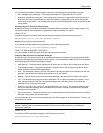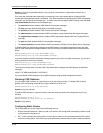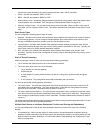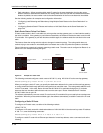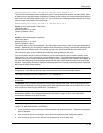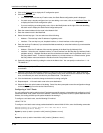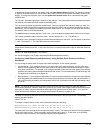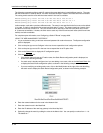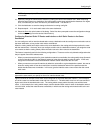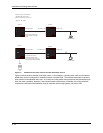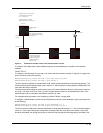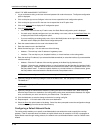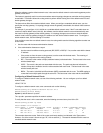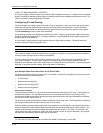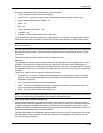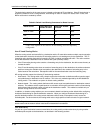
Configuring IP
NOTE: If you specify 16, RIP considers the metric to be infinite and thus also considers the route to be
unreachable.
10. Optionally change the administrative distance by editing the value in the Distance field. When comparing
otherwise equal routes to a destination, the routing switch prefers lower administrative distances over higher
ones, so make sure you use a low value for your default route. The default is 1.
11. Click the Add button to save the change to the device’s running-config file.
12. Repeat steps 8 – 11 for each static route to the same destination.
13. Select the Save
link at the bottom of the dialog. Select Yes when prompted to save the configuration change
to the startup-config file on the device’s flash memory.
Configuring Standard Static IP Routes and Interface or Null Static Routes to the Same
Destination
You can configure a null0 or interface-based static route to a destination and also configure a normal static route to
the same destination, so long as the route metrics are different.
When the routing switch has multiple routes to the same destination, the routing switch always prefers the route
with the lowest metric. Generally, when you configure a static route to a destination network, you assign the route
a low metric so that the routing switch prefers the static route over other routes to the destination.
This feature is especially useful for the following configurations. These are not the only allowed configurations but
they are typical uses of this enhancement.
• When you want to ensure that if a given destination network is unavailable, the routing switch drops (forwards
to the null interface) traffic for that network instead of using alternate paths to route the traffic. In this case,
assign the normal static route to the destination network a lower metric than the null route.
• When you want to use a specific interface by default to route traffic to a given destination network, but want to
allow the routing switch to use other interfaces to reach the destination network if the path that uses the
default interface becomes unavailable. In this case, give the interface route a lower metric than the normal
static route.
NOTE: You cannot add a null or interface-based static route to a network if there is already a static route of any
type with the same metric you specify for the null or interface-based route.
Figure 6.3 shows an example of two static routes configured for the same destination network. In this example,
one of the routes is a standard static route and has a metric of 1. The other static route is a null route and has a
higher metric than the standard static route. The routing switch always prefers the static route with the lower
metric. In this example, the routing switch always uses the standard static route for traffic to destination network
192.168.7.0/24, unless that route becomes unavailable, in which case the routing switch sends traffic to the null
route instead.
6 - 43



